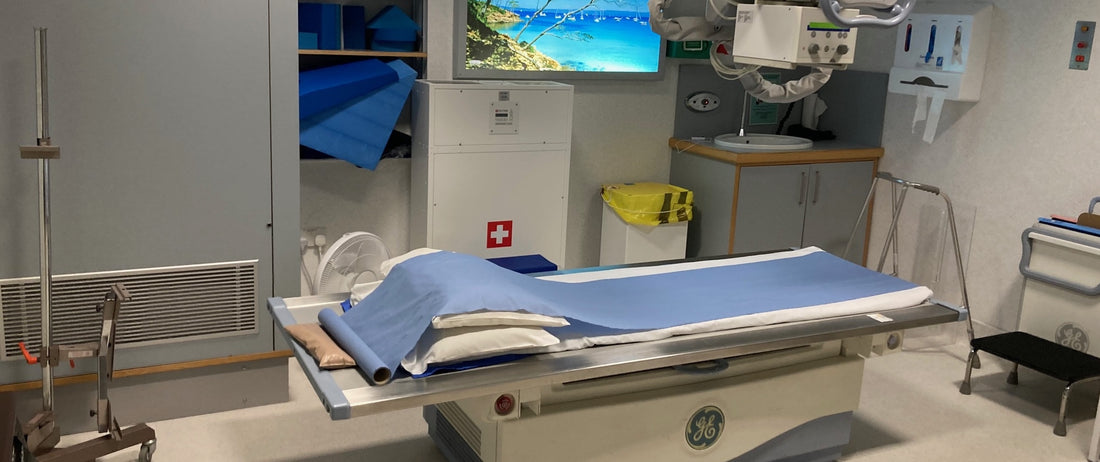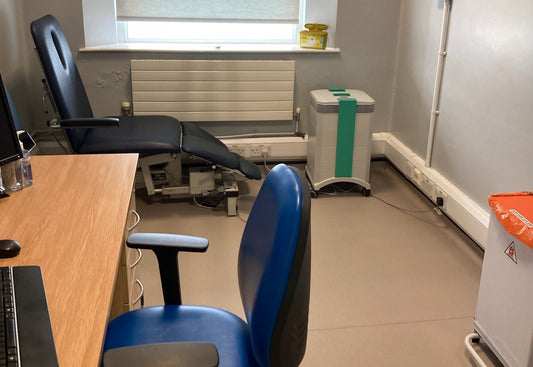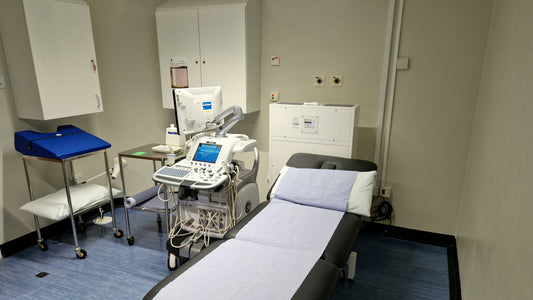Air quality refers to the degree to which the air, the most important component for our survival, is suitable or clean enough for us or the environment.1 Chemical, physical or biological agents can modify the natural characteristics of the atmosphere and can affect the quality of air both indoors and outdoors.2
We are all aware that outdoor air pollution can impact our health, but indoor air pollution can also have significant and harmful health effects.2 The levels of indoor air pollutants are often three to four times higher than outdoor levels, and occasionally these levels can be several hundred times higher.3 While air pollution, both indoors and outdoors, is a serious problem, it gains even more importance in healthcare settings.
Hospitals and clinical settings play an important role in our society to ensure good health and vitality of the community. They are complex constructions, with very different needs, users, and requirements compared to other building facilities.4,5 With the presence of a diverse mixture of chemicals ranging from volatile organic compounds and semi-volatile organic compounds from cleaning solutions, detergents and disinfectants used to reduce the risk of infection, to particulate matter (PM) from buildings and microbiological compounds such as bacteria from in and outpatients, these settings are highly complex and sensitive.4-6
Not only this, healthcare facilities must also deal with polluted air coming in from the outside where emissions from road traffic, including hospital parking facilities, building work, and generators employed to prevent power interruptions, represent a further threat to air quality.6
The World Health Organisation has developed guidelines for air quality, which dictate the following:7
- Nitrogen dioxide: Annual average of 40 μg/m3
- PM10: Annual mean of 15 µg/m3, 24-hour mean of 45 µg/m3
- Ozone: 8-hour mean of 100 µg/m3
Based on the latest London Atmospheric Emissions Inventory, every hospital and medical centre in London is in areas which do not meet World Health Organisation guideline limits for toxic air pollution. The data showed that while 91% of hospitals and medical centres meet the legal limits set by the UK, they still fail the stricter WHO guidelines around the two main air pollutants of concern – nitrogen dioxide and fine PM.8
Moreover, according to a study led by King's College London, Queen Mary University of London and the University of Edinburgh, children growing up in polluted parts showed significantly smaller lung volume, with a loss of approximately five per cent in lung capacity compared to their peers in the rest of England.9
It does not stop there - improper control of hospital air quality can delay a patient’s recovery time, cause headaches, fatigue, dryness, and irritation of the eyes and skin, as well as worsen the health of susceptible patients. Additionally, it can also cause cardiovascular and respiratory diseases, lung cancer and acute illnesses like heat exhaustion.6
Through inhalation, skin contact and ingestion, healthcare workers, patients and visitors are also vulnerable to being infected and become sources of microbial spreading.10 There were an estimated 834,000 healthcare-associated infections in 2016/2017 costing the NHS £2.7 billion, accounting for 28,500 patient deaths, 7.1 million occupied hospital bed days and 79,700 days of absenteeism among front-line healthcare professionals.11
Florence Nightingale, the foundational philosopher of modern nursing, wrote in Notes on Nursing: “…the very first canon of nursing […] is […] to keep the air he breathes as pure as the external air.”12
The importance of ventilation was emphasised way back in the 19th century and again now more recently, with the COVID-19 pandemic. Ensuring quality air (indoor and outdoor) is vital for our health and well-being, both socially and economically. And it is now becoming clear just how vital heating, ventilation and air conditioning systems are to maintaining good air quality and public health.
Hospitals are one of the most crucial areas for air filtration but can also be one of the most unique. With numerous different rooms, equipment, and needs, each will have its own set of requirements that must be met.
We work with Infection Control Teams and Facilities Managers to specify the optimum installation for each healthcare environment. For more information, please call 0203 176 0524 or email us at info@CommercialAirFiltration.co.uk.
References:
- NSW Department of Planning and Environment. Air Quality Basics. Available at: https://www.environment.nsw.gov.au/topics/air/air-quality-basics. Last accessed: November 2023.
- Air Pollution. Available at: https://www.who.int/health-topics/air-pollution#tab=tab_1. Last accessed: November 2023.
- Global Action Plan. Revealed - Indoor air pollution 3.5 times worse than outdoor air pollution. Available at: https://www.globalactionplan.org.uk/news/revealed-indoor-air-pollution-3-5-times-worse-than-outdoor-air-pollution#:~:text=A%20new%20study%20from%20Clean,560%20times%20higher%20than%20outdoors. Last accessed: November 2023.
- Settimo G, Gola M, Capolongo S. The Relevance of Indoor Air Quality in Hospital Settings: From an Exclusively Biological Issue to a Global Approach in the Italian Context. Atmosphere. 2020; 11(4):361.
- Baudet A, Baurès E, Guegan H, Blanchard O, Guillaso M, Le Cann P, Gangneux J-P, Florentin A. Indoor Air Quality in Healthcare and Care Facilities: Chemical Pollutants and Microbiological Contaminants. Atmosphere. 2021; 12(10):1337
- HSJ: Importance of indoor air quality in healthcare settings. Available at: https://www.hsj.co.uk/patient-safety/importance-of-indoor-air-quality-in-healthcare-settings/7033999.article#:~:text=Headaches%2C%20fatigue%2C%20dryness%2C%20and,patients%20with%20pre%2Dexisting%20disease. Last accessed: November 2023.
- WHO global air quality guidelines. Available at: https://iris.who.int/bitstream/handle/10665/345334/9789240034433-eng.pdf. Last accessed: November 2023.
- Gov: All London hospitals in areas which exceed WHO toxic pollution limits. Available at: https://www.london.gov.uk/press-releases/mayoral/air-around-hospitals-exceed-who-pollution-limits#:~:text=New%20analysis%20from%20City%20Hall%2C%20published%20today%2C%20shows%20that%20despite,Health%20Organization's%20(WHO)%20guidelines%20for. Last accessed: November 2023.
- Air pollution restricting children's lung development. Available at: https://www.kcl.ac.uk/news/air-pollution-restricting-childrens-lung-development#:~:text=Children%20exposed%20to%20air%20pollution,particulate%20matter%20(PM10). Last accessed: November 2023.
- Bonadonna L, Briancesco R, Coccia AM, Meloni P, Rosa G, Moscato U. Microbial Air Quality in Healthcare Facilities. Int J Environ Res Public Health. 2021;18(12):6226
- Guest JF, Keating T, Gould D, et al. Modelling the annual NHS costs and outcomes attributable to healthcare-associated infections in England. BMJ Open 2020;10:e033367.
- Gola M, Settimo G, Capolongo S. Indoor Air Quality in Inpatient Environments: A Systematic Review on Factors that Influence Chemical Pollution in Inpatient Wards. J Healthc Eng. 2019; 2019:8358306




